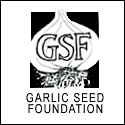Prussia: No Garlic. No State.

In the 1600's, the Prussian government banned the import of robust Italian garlic in hopes of saving its own garlic industry which, alas, produced weaker, smaller garlic. To preserve their livelihood (and mindful of the fact that Prussian royals preferred Italian garlic) some clever pasta makers in Sicily invented Paccheri pasta, wide-hollow tubes, each of which could be used to smuggle four or five garlic cloves across the Alpine border. They were so successfully that ultimately, the Prussian garlic trade folded.
64 years ago, Prussia itself suffered the same fate. It was dissolved by the Allied Control Council on this day in 1947. I modified this recipe for Paccheri with Shrimp from one by Mary Ann Esposito whose Ciao Italia is America’s longest running television cooking show. (Take that Rachel Ray!)
Paccheri with Garlic Shrimp and Tomatoes
1/4 c. olive oil
6 cloves of garlic
2 t. red pepper flakes
1 c. cherry tomatoes, halved
1/2 c. dry white wine
2 lbs. shrimp
chopped parsley, to garnish
1/2 lb. paccheri pasta
Heat olive oil and saute garlic until soft. Add tomatoes and red pepper flakes. Cook one or two minutes then add the wine and bring to a boil; lower the heat and add the shrimp. Cover with a lid and cook about 8 minutes.
While the shrimp cook, cook the paccheri in low boiling salted water (see note) until al dente. Drain and add them to the sauté pan with the shrimp with some of the pasta water. Cook a few minutes until everything is well blended. Season with salt and pepper. Serve immediately.
Italians don’t believe in serving cheese with seafood, but I’m not Italian.
Note: Unlike most pasta, paccheri should be boiled on a low boil so it doesn’t split.
Labels: garlic; shrimp, Mary Ann Esposito, Paccheri Pasta, Prussia, Sicily





